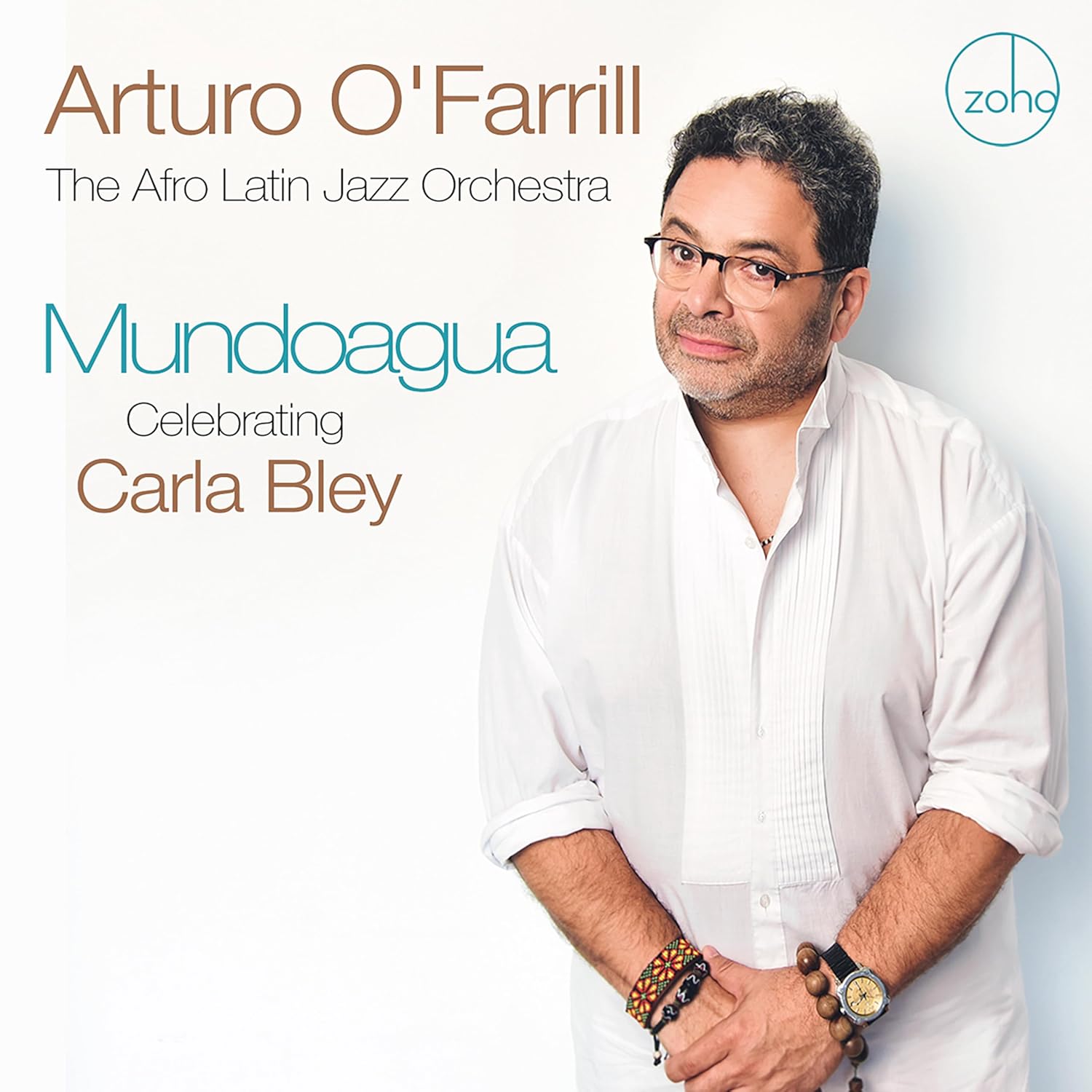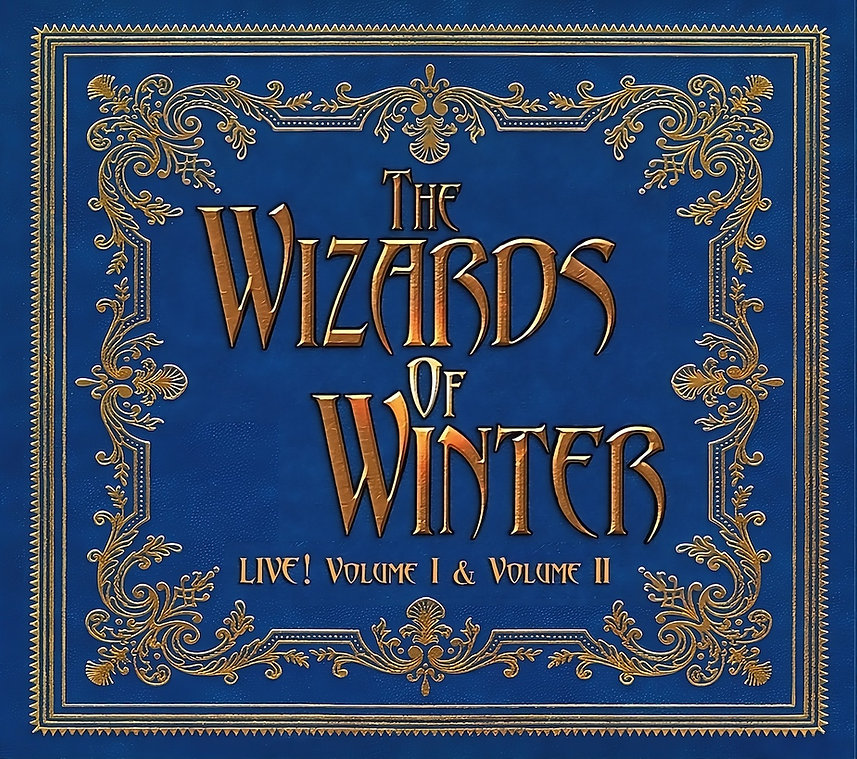
This Friday, famed jazz composer and musician Arturo O’Farrill and his fellow musicians in The Afro Latin Jazz Orchestra will release their new album, Mundoagua: Celebrating Carla Bley through Zoho Records. Spanning 10 tracks and a run time of just over an hour (61 minutes to be exact), the record is an intriguing musical presentation. That is due in large part to its featured liner notes. This may come across as a surprise to some that liner notes serve as the key foundation for an album, but they are undeniably important in the case of this album. While the liner notes are unquestionably key to the album’s presentation, they are only a portion of what makes the album a sure success. The album’s musical arrangements build on the foundation established through the liner notes. Listeners will understand this after reading through the liner notes. Putting the finishing touch to the album is its production. When the production is considered alongside the album’s overall content, the whole therein makes Mundoagua: Celebrating Carla Bley a presentation in whole that is a welcome early addition to this year’s field of new jazz albums.
Mundoaguaga: Celebrating Carla Bley, the forthcoming latest album from Arturo O’Farrill and The Afro Latin Jazz Orchestra, is a positive addition to this year’s field of new jazz albums. Its success comes in large part through its liner notes. As already pointed out this may seem odd to some but the liner notes are of such importance because of the background that they provide. Penned by O’Farrill himself, they make clear that despite the album’s title, it is not a covers set. Rather, it is an album composed of three completely separate works: ‘Mundoagua,’ ‘Blue Palestine’ and ‘Dia De Los Muertos.’ The first and third are originals from O’Farrill and company while the second is a work composed by his late friend, Carla Bley.
As O’Farrill points out in his writing, the first of the album’s songs is the title composition, ‘Mundoagua.’ Pronounced Moon-dwa-gwa, the composition makes up a little more than 20 minutes of the album’s 61 minutes. The remaining time is made up of, ‘Blue Palestine,’ and ‘Dia De Los Muertos.. O’Farrill writes quite warmly of Bley in his notes, calling her “a guiding light” and “the biggest influence on my work as a composer…” O’Farrill further makes clear that ‘Blue Palestine’ was Bley’s final work and that he was so moved to commission the work. In other words, the group’s performance of the composition is not a cover but a tribute to someone whom O’Farrill (and certainly others in the Afro Latin Jazz Orchestra) respected. The performance put in by the collective shows the respect that they had for Bley, too. He goes into just as much depth about Bley’s work in his notes as his own works, outlining in precise terms with discussions on music theory and composition throughout. That he took to much time outlining each of the song’s movements shows in its own way, the respect that he continues to have for Bley to this day.
Speaking of the depth that O’Farrill provides here, it is not the only song to which he devotes his time. He points out that the title composition is a sociopolitical statement through music of sorts. This, he makes clear as he writes that “so many of the sub-themes in the narrative in the composition have to do with global crises caused by neo-fascism and the death throes of predatory capitalism, which are fundamental reasons for all human suffering – and global warming with its resulting climate disasters, including the breaking of temperature records and cataclysmic weather events daily, if not hourly.” He further adds that the composition is meant to be “journalistic” not “optimistic nor doomsaying.” This is a deep discussion on this 20-minute-plus composition. Listeners will find quite interesting that the first movement is, according to O’Farrill, “based on the five daily prayers found in the Islamic tradition.” The blend of fusion and cool jazz that the collective took here is certain to engage listeners especially considering the serious nature of said prayers.
From here, O’Farrill points out that the second movement is intentionally energetic, what with its rather free jazz style (complete with newswire sound and overall controlled cacophony) because it is meant to illustrate people’s realization of what is happening. The energy in the performances does so well to capture the collective shock among the masses of what is happening to the earth. Additionally, as O’Farrill points out, the newswire aspect is also meant to illustrate the negative role of the media in everything. His commentary herein is damning but very true nonetheless.
Moving to ‘Dia De Los Muertos,’ this is not a Halloween song by any means, as O’Farrill makes clear. Rather, it is another sociopolitical commentary examining clearly, the roots of today’s Latin American population and the role of Americans of European descent in the destruction of the planet. His discussions herein are sure to generate lots of discussion among audiences as the song’s two movements play out.
All of the background that O’Farrill provides about his own composition and that of Bley is so rich. It is certain to fully engage listeners and in turn generate plenty of entertainment as listeners take in the album’s songs. Because he took the time to add so much information regarding the compositions, listeners will be able to fully experience the thoughts and emotions discussed by O’Farrill. On that note, the varied emotions and thoughts evoked through each composition create a clear diversity in style and sound that is itself certain to keep listeners engaged and entertained. That diversity in sound and style and its impact builds on the foundation established by the album’s liner notes, which again ensure so much engagement and entertainment to begin with.
Rounding out the most important of the elements that make up Mundoagua is the record’s production. Whether in a busier moment, such as the title track’s second movement or in a more controlled moment, such as in the second movement of ‘Blue Palestine,’ the production shines through, making for even more ensured engagement among listeners. The subtle echo from the vibraphone as Patricia Brennan performs her part in that later work is so warm and rich thanks to the production. As the song progresses and a piano and horn come into play, the whole therein is expertly balanced, with each part complimenting the others. The sound balance that results creates a musical tapestry that is certain to generate so much emotion among listeners as they contemplate what Bley might have been trying to present in the song’s theme. This is a clear example of the importance of the album’s production. When the production of those songs and of ‘Dia De Los Muertos’ is taken into collective consideration the whole makes clear the role of that aspect. When that whole is considered alongside the album’s overall content, the whole therein further makes Mundoagua: Celebrating Carla Bley a welcome early entry to 2025’s field of new jazz albums.
Mundoagua: Celebrating Carla Bley, the forthcoming new album from Arturo O’Farrill and the Afro Latin Jazz Orchestra, is a powerful new presentation from the collection. It is a work that O’Farrill and company’s established audiences will appreciate just as much as more casual audiences. That is proven in large part through its featured liner notes. The liner notes provide such a clear picture of what O’Farrill and company were striving to illustrate through each movement of their two originals. That depth of background ensures listeners’ engagement and entertainment in each work. On the same note, the liner notes outlining the construction of Bley’s own original performed here makes for its own interest and appeal. All things considered the liner notes included in this album build a strong foundation for the record. Building on that foundation is the musical content itself featured within the album. The album’s featured arrangements are of their own note because of their diversity in sound and style. O’Farrill explains the differences in the liner notes but in hearing the songs firsthand, audiences are sure to appreciate that aspect even more. The record’s production puts the finishing touch to its presentation. That is because of the expert balance that is exhibited in each musician’s performance in each song. From more lively moments to more controlled movements, the album’s production brings out the best of each work. The aesthetic appeal ensured here works with the appeal ensured through the overall content to make Mundoagua: Celebrating Carla Bley a solid early entry to this year’s field of new jazz albums.
Mundoaugua: Celebrating Carla Bley is scheduled for release Friday through Zoho Records. More information on the album is available along with all of the latest news from Arturo O’Farrill and the Afro Latin Jazz Orchestra at:
Website: https://afrolatinjazz.org
Facebook: https://facebook.com/pianitis



